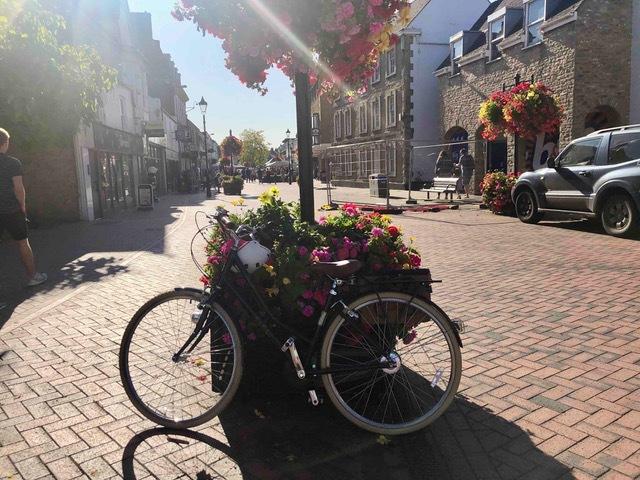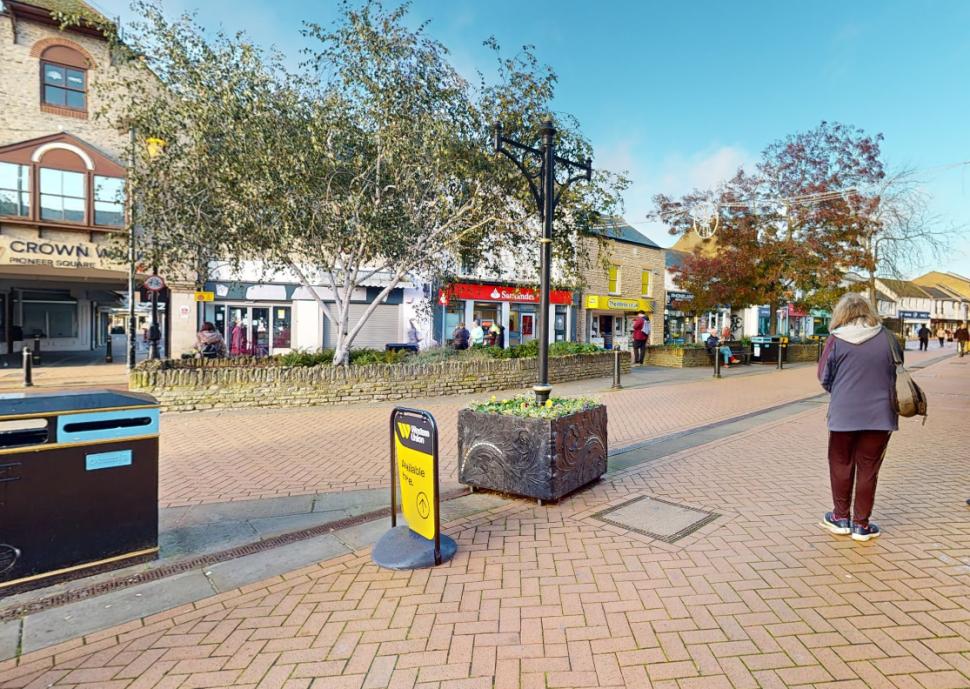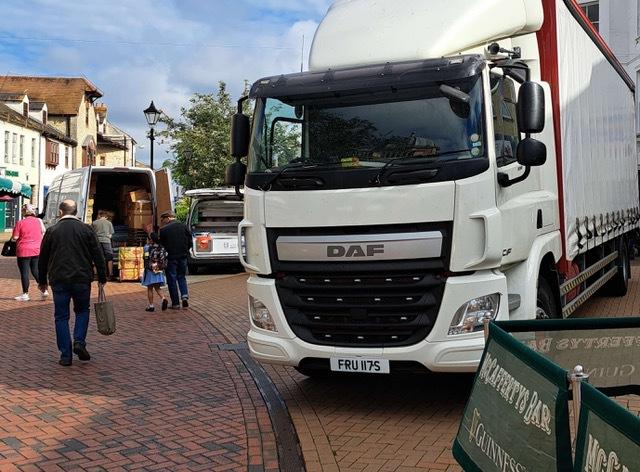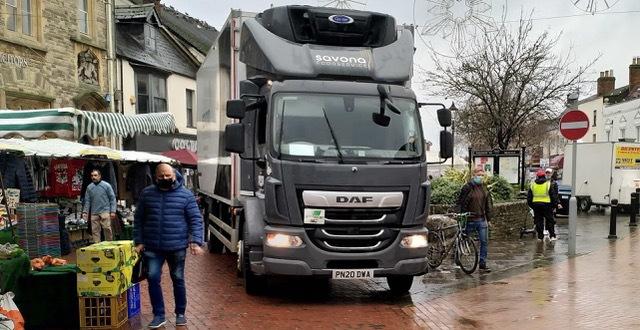- News
- Reviews
- Bikes
- Components
- Bar tape & grips
- Bottom brackets
- Brake & gear cables
- Brake & STI levers
- Brake pads & spares
- Brakes
- Cassettes & freewheels
- Chains
- Chainsets & chainrings
- Derailleurs - front
- Derailleurs - rear
- Forks
- Gear levers & shifters
- Groupsets
- Handlebars & extensions
- Headsets
- Hubs
- Inner tubes
- Pedals
- Quick releases & skewers
- Saddles
- Seatposts
- Stems
- Wheels
- Tyres
- Tubeless valves
- Accessories
- Accessories - misc
- Computer mounts
- Bags
- Bar ends
- Bike bags & cases
- Bottle cages
- Bottles
- Cameras
- Car racks
- Child seats
- Computers
- Glasses
- GPS units
- Helmets
- Lights - front
- Lights - rear
- Lights - sets
- Locks
- Mirrors
- Mudguards
- Racks
- Pumps & CO2 inflators
- Puncture kits
- Reflectives
- Smart watches
- Stands and racks
- Trailers
- Clothing
- Health, fitness and nutrition
- Tools and workshop
- Miscellaneous
- Buyers Guides
- Features
- Forum
- Recommends
- Podcast
 Bicycle at Sheep Street in Bicester (Catherine Hickman, Bicester Bike Users Group)
Bicycle at Sheep Street in Bicester (Catherine Hickman, Bicester Bike Users Group)Cyclists to be allowed to ride on popular shopping street pedestrianised for 30 years as police say it will "split opinion"... and Conservative councillor concerned about "abuse by vehicles"
A shopping street that has banned cycling for three decades will be opened up to those riding bicycles, a cycling campaign group arguing that the move could be a "great boost to the struggling high street" with "space for all users to circulate in safety". However, the decision concerning Bicester's Sheep Street, in Oxfordshire, expected to be approved tomorrow, has not been universally popular, Thames Valley Police weighing in with the comment that the proposal will "split public opinion" and Conservative councillors expressing concerns.
The Oxford Mail reported that Oxfordshire County Council's transport chief Andrew Gant has been recommended to approve an Experimental Traffic Order (ETO) to allow cyclists to ride in the pedestrianised street, the order lasting six months before a decision on whether to make the scheme permanent is made.
Earlier this month, the Chair of Bicester Bike Users Group, Catherine Hickman, told road.cc that throughout the week footfall can be "very light" and there is "ample" room for cyclists and pedestrians to co-exist safely. Furthermore, the current situation, with enforcement of the cycling ban largely absent, means "the least responsible cyclists" cycle along Sheep Street regardless, the ban only serving to deter people who would otherwise access the route safely.
Hickman argued allowing cyclists access could be a "great boost to the struggling high street" and questioned the pedestrian safety argument considering some critics "seem almost completely unconcerned" by heavy goods vehicles, vans and car drivers regularly using the route for deliveries.
Commenting on the likely introduction of cyclist access, a spokesperson for the Bicester Bike Users Group said it is "hard to know how well it will work" unless the town "give it a go" and added that they believe "many of the concerns raised will prove unfounded".
"This is probably one of those proposals that will split public opinion"
Another organisation to comment on the situation was Thames Valley Police, the force calling the decision a "tricky one" but that it appears the council is "only trying to formalise what is the norm".
"Allowing this could set a precedent for other similar locations. Dare I suggest Queen Street in Oxford. This location has been the source of misuse by cyclists for many decades despite the restriction and also a burden on use," a spokesperson said. "This is probably one of those proposals that will split public opinion."
A Conservative councillor has been outspoken against the lifting of the cycling ban, saying she is "disappointed but not surprised" by the expected decision of the Liberal Democrat-led council but which no party has had outright control over since 2013. Donna Ward also claimed the decision is being made "despite 65 per cent of those who have responded being against the ETO".
"I have concerns that many issues need addressing before this can be considered sufficiently. None of the concerns raised have been answered," she said.
"These included Bicester Friday market and events, the current abuse of Sheep Street by vehicles which is not being enforced by the county council, how will cyclists safely enter and exit Sheep Street given the market square is one way and could require a turn in the middle to enter. There are also concerns raised by Unlimited Oxfordshire who represent our most vulnerable residents."
The fact HGVs, vans and other drivers regularly access the pedestrianised street to make deliveries was raised during the past weeks, Bicester Bike Users Group pointing out that some who oppose the scheme have not raised the issue of delivery vehicles risking safety.
Ford's fellow Tory councillor Michael Waine had claimed that allowing cyclists to use the route would mean being unable to "safeguard pedestrians and other users, especially on busy days when the street is full of people".
"I am totally opposed to the proposal to allow two-way cycling in Sheep Street 24 hours a day, seven days a week," he said. "Sheep Street has been a pedestrianised area for 30 years or more and has become an area used for markets, street cafes, exhibitions, and other events."
However, Hickman suggested those opposed to the scheme had their "priorities all wrong".
"Cycling responsibly along the street would be relatively low risk, particularly as there is space, and it would provide a safe route given that there are no alternative routes that actually have safe cycle provision. It's also worth mentioning that Sheep Street is part of NCN route 51," she said, before pointing out those who are more likely to cycle dangerously currently ignore the ban anyway due to a lack of enforcement.
The move to open up more town centre areas to cyclists goes against the growing number of councils that we have reported on introducing bans on cycling in recent times, often using a Public Spaces Protection Order (PSPO).
Perhaps the most prominent example is that of North Lincolnshire Council, who stated it had "escalated" and "intensified" its "war on cycling menaces" by implementing a complete ban on riding a bike in pedestrianised zones, as part of a wider crackdown on anti-social behaviour.
In Grimsby, cyclists have been fined £100 for doing so, one rider ordered to pay £1,100 after refusing the fixed-penalty notice.
Coventry has introduced a city centre e-bike ban in a bid to tackle "reckless" and anti-social behaviour, West Midlands Walking and Cycling Commissioner Adam Tranter saying it will only "discourage cycling and penalise responsible cyclists".
Southend Council has launched a consultation to impose stricter 'no cycling' rules in the town centre that could see cyclists being ordered to pay £100 for riding on its high street, the local authority's deputy leader saying that "fining is one of the few options left".
However, Worcester City Council this month opted against extending a controversial PSPO brought in with the stated aim of tackling dangerous cycling in the city centre, but which drew criticism from campaigners who said it acted as a "psychological barrier" to more people using bicycles.
"I was never convinced people feeding gulls, aggressive begging and dangerous cyclists were the big issues facing Worcester," Cllr Matt Lamb, a Labour Party representative, said of the decision. "I thought it was more a bit of political theatre."
Green Party councillor Tom Piotrowski suggested the PSPO had been "more about culture wars than what we want for the city".
Dan is the road.cc news editor and joined in 2020 having previously written about nearly every other sport under the sun for the Express, and the weird and wonderful world of non-league football for The Non-League Paper. Dan has been at road.cc for four years and mainly writes news and tech articles as well as the occasional feature. He has hopefully kept you entertained on the live blog too.
Never fast enough to take things on the bike too seriously, when he's not working you'll find him exploring the south of England by two wheels at a leisurely weekend pace, or enjoying his favourite Scottish roads when visiting family. Sometimes he'll even load up the bags and ride up the whole way, he's a bit strange like that.
Latest Comments
- David9694 41 min 51 sec ago
Down my way, a 200 yard bus gate or 20 mph limit extinguishes all economic and domestic life, so I assume Paris centre-ville has been rendered a...
- Miller 1 hour 31 min ago
Thanks. I have no idea about the bike which is being held at a local police station. I can't imagine it's in good shape. I remember nothing about...
- TimC340 1 hour 44 min ago
Why didn't RoadCC have a review sample before this article? Then it would be less speculation and more fact. Never mind, DCRainmaker and DesFit...
- mark1a 5 hours 35 min ago
I think the best thing I did when I rode the sportive in 2016 (163km edition from Busigny with all 29 cobbled secteurs) was to fit Elite Pria Pavé...
- mark1a 5 hours 55 min ago
On the plus side, I haven't taken out any over 50 life insurance plans or felt compelled to arrange any prepaid funerals over the weekend, or...
- chrisonabike 7 hours 44 min ago
Edinburgh has formal booking, they added putting "bike" or "cargo bike" in the car registration section. (I've just checked again and oddly you...
- ktache 8 hours 5 min ago
I don't think I will be converting anytime soon, but thanks for the report, and I wouldn't mind if you update with real world use.
- Freddy56 8 hours 50 min ago
I would say it more a jersey than a jacket. Super warm chest insulated with the sleeves are lighter, more like a roubaix top, so, ideal spring wear...
- PenLaw 9 hours 8 min ago
Nigel Farage is simply pleasing his main sponsors, that being big oil and their Telegraph/Express pseudo employees....
- Rendel Harris 10 hours 26 sec ago
I don't know if they would specifically target them but I do know that travelling on local services around London a couple of times a week, once or...





Add new comment
12 comments
The argument in the beginning seems to be that cyclists will be a benefit to the high street. I guess that means that they are going there to shop rather than cycle through. Which curiously seems to be the other benefit touted at the end: Safe through route and part of a cycle route. Now, I don't really care whether cyclists use the street or not but if I was in any kind of decision making capacity, the contrary arguments would turn me into a stubborn old git and reject the proposal on the grounds of shit evidence and benefit statements.
Indeed - but it's no more inconsistent than our current road design - very often UK high streets are "for shopping" and also a busy through route.
Mary Portas should have been pushing pedalling!
It does seem a bit ridiculous having an outright ban on cycles at all times, yet permit holders can drive down there whenever they like and disabled/loading via HGV permitted before 9am and after 4pm.
Not to mention it being part of the National Cycle Network route 51.
That sign "confuses drivers" - therefore doesn't count.
I'm confused by the signage. One sign is no motor vehicles and the other says no cycling, so why isn't it a red circle with all white - No vehicles except bicycles being pushed ?
If it was a 'no vehicles' sign (all white circle centre), it would mean cyclists could ride in the hours that HGVs and disabled drivers are allowed access. It would be really risky to have cyclists mixing with that sort of traffic!
IIRC Dutch researchers found that generally banning bikes or removing bans on bikes from pedestrianised streets usually either made no difference to accident stats or increased risk! (combination of new riders copying existing riders they see, so copying riders illegally ignoring bans, rather than well behaved riders who follow bans and aggression from some pedestrians against people riding illegally resulting in collisions)
Safety improvements only came from providing high quality alternative routes; And anywhere claiming cyclists ignored the alternative routes without bans was actually that alternative routes were substandard (including bad signage as part of substandard infra - most common case in NL)...
Since when was 'split public opinion' any concern of the police?
Unless it is the public's opinion of the police themselves.
100% agree, it's nothing to do with them, how public opinion is split.
Can someone explain to me why cyclists in pedestrianised areas are apparently incredibly dangerous and yet shared use infrastructure considers it fine to mix cyclists and pedestrians?
Apparently there's nothing wrong with cyclists sharing a road with cars and SUVs and HGVs and yet shared use infrastructure (pedestrians/cyclists) is a death trap…?
But cyclists
(edited for clarity after I reread it and realised that it didn't say what I'd meant it to say)
I'm genuinely shocked by their reaction.